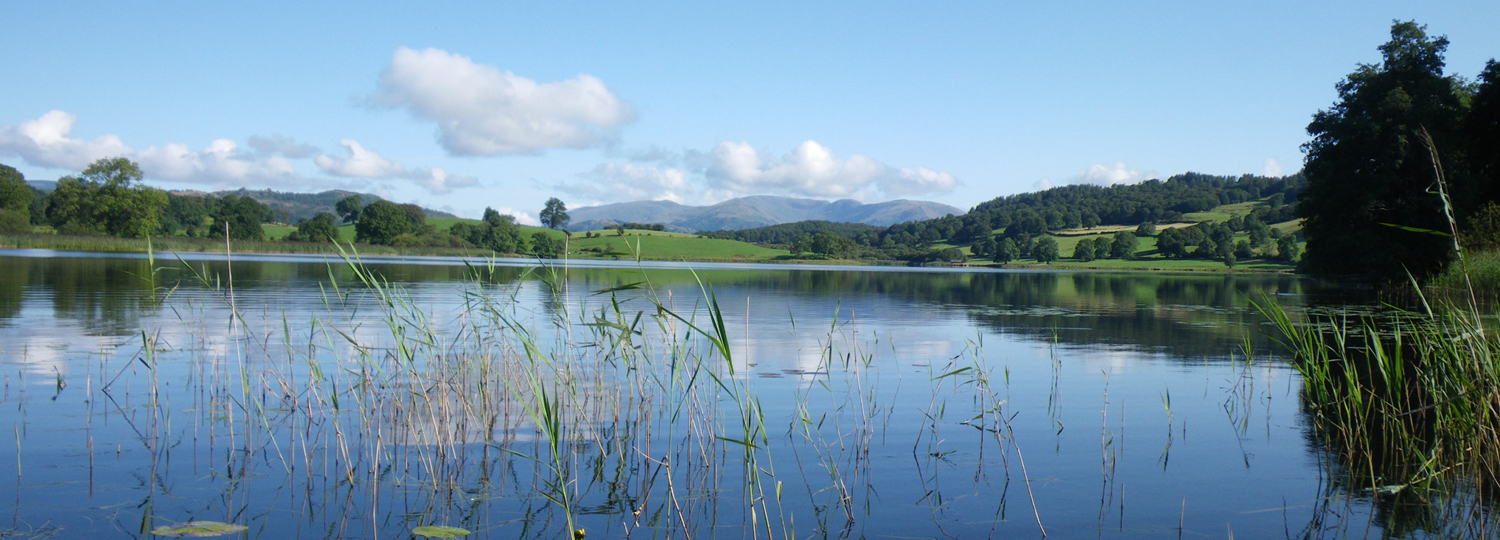Overview
Esthwaite Water is a small lake of glacial origin in the south eastern area of the English Lake District, Cumbria, UK. The lake has a mean depth of 6.9m, covers an area of 0.96km² and its drainage area forms part of the larger Windermere catchment. It is designated both as a Natural England Site of Special Scientific Interest and as a Ramsar Convention site on account of its diverse macrophyte community and the well developed hydrosere at the northern end of the lake. Its local importance for breeding birds is also recognised - Great crested grebe, Teal, Tufted duck, Red breasted merganser, Pochard and Sedge warbler all regularly breed within the site. An Osprey pair has also been spotted fishing regularly at the lake in recent summers.
Esthwaite Water is one of the most nutrient enriched lakes in the English Lake District, but recently two changes have been implemented to improve the ecological status of the lake: the removal of the fish farm on the lake and the upgrading of the Hawkshead Wastewater Treatment Works (WwTWs)
Monitoring the environment
Esthwaite Water is one of the most intensively studied lakes in the world. The Freshwater Biological Association initiated a research programme on Esthwaite Water in 1945, subsequently undertaken by CEH since 1989. A range of physical, chemical and biological variables are recorded at the lake on a fortnightly basis. More recently, CEH installed an Automatic Water Quality Monitoring Station on the lake which delivers high-resolution meteorological and lake data that contribute to the United Kingdom Lake Ecology Observatory Network (UKLEON).
Pressures
Following the establishment of Hawkshead WwTWs in 1973, which discharges treated effluent into the main inflow, a rapid increase in eutrophication was observed at Esthwaite Water. In 1981 the problem was intensified with the installation of a fish farm for rainbow trout cultivation in the southern basin of the lake, and the consequent introduction of nutrients in waste from the fish cages to the system. The introduction of farmed trout to the lake for game fishing may have exacerbated the effects of eutrophication even further because high fish stocking density increases predation pressure on zooplankton, and hence relaxes the grazing pressure on the phytoplankton population.
Contact
Prof Stephen Maberly
